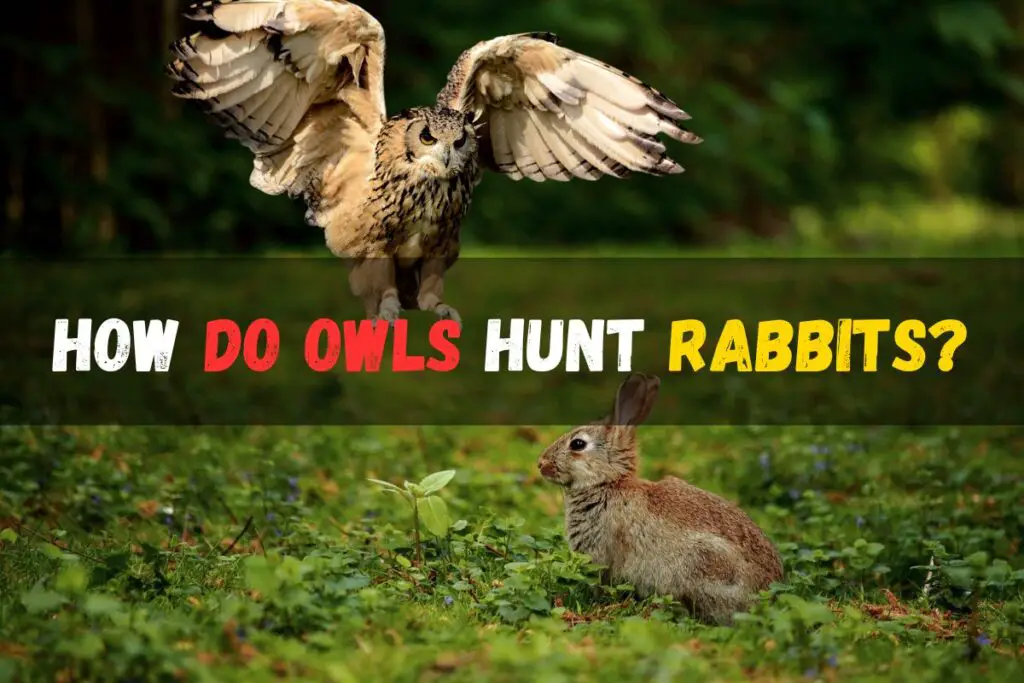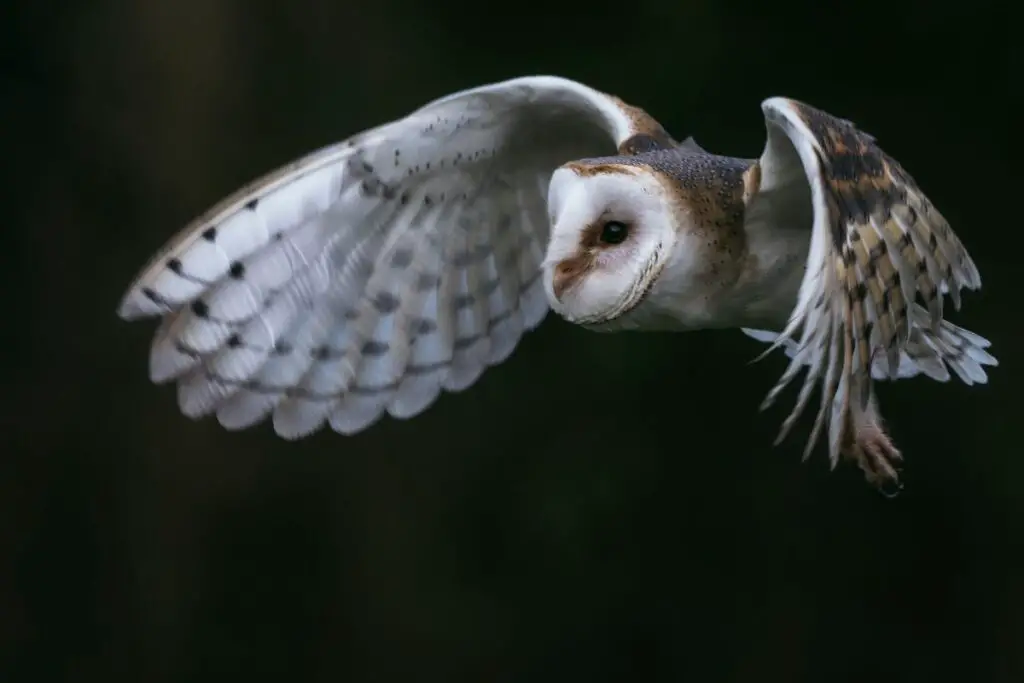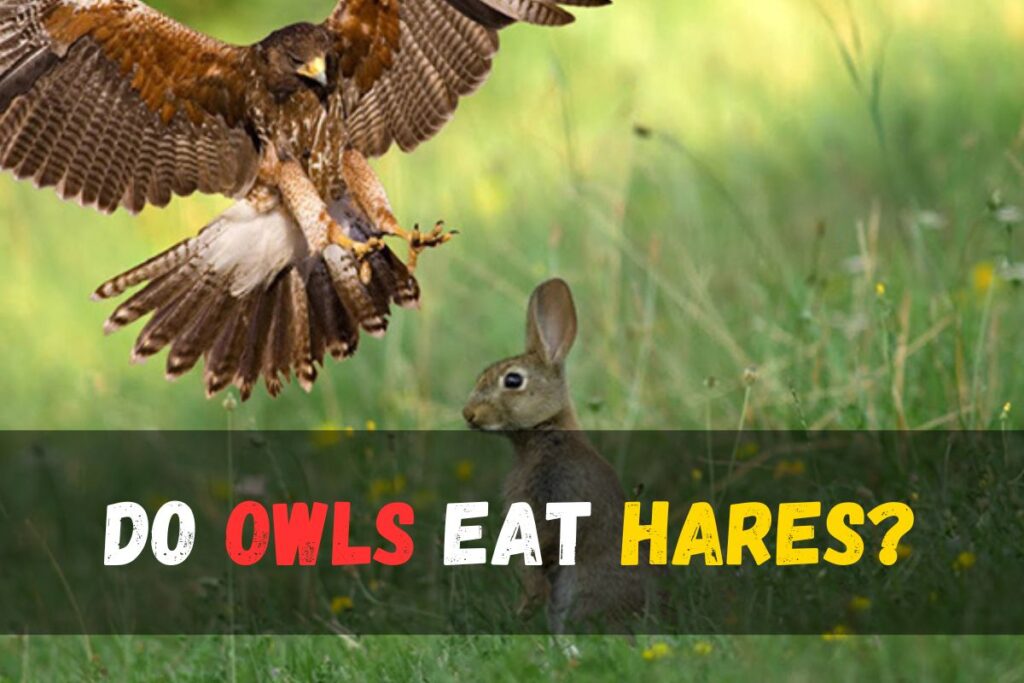Do owls eat rabbits?
Many rabbit owners are often curious about the predators that pose a potential threat to their furry companions. Among the questions that frequently arise is, “Do owls eat rabbits?” well, the short answer is yes. It’s a topic that piques interest and concern, given the enigmatic nature of these birds of prey and their role in the ecosystem. To shed light on this intriguing question, we delve into the facts surrounding owls, their hunting habits, and their occasional predilection for rabbits.
Owls are fascinating creatures known for their remarkable hunting abilities. Among the different owl species, such as the Little owl, Eagle owl, Barn owl, Barred owl, Hawk owl, and Great horned owl, they exhibit varying sizes, each adapted to their unique ecological niche. When it comes to their diet, rabbits play a significant role as a food source for these birds of prey.
Owls are nocturnal hunters, relying on their exceptional eyesight and hearing to locate their prey. Their eyesight is characterized by its precision and keen focus, making them formidable predators in the night. Owls’ hearing is equally remarkable, allowing them to detect even the slightest rustle of a rabbit in the dark.
In the pursuit of their prey, owls demonstrate incredible speed and patience. Their silent flight and predatory precision make them formidable hunters, ensuring a high success rate in capturing rabbits and hares. While they have numerous predators, owls themselves are efficient in hunting during the night.
Owls are opportunistic hunters and can carry out their hunting role by preying on a variety of creatures. Their diet often includes small mammals like wild rabbits and hares, which they find regrettably easy to catch due to their exceptional hunting skills.
Do owls eat chickens?
How do owls hunt rabbits?
Owls hunt rabbits primarily by taking advantage of specific behaviors and physical attributes. When rabbits are out in the open, munching on grass, owls become most active. Owls usually perch on branches and wait patiently for the right moment. If the rabbit isn’t alarmed, the owl will silently swoop down and attack the unsuspecting rabbit with its powerful and sharp talons. These talons are frequently used to kill the rabbit, often by crushing its head and tearing it apart during consumption.
In general, owls prefer to devour their prey immediately on the spot. However, there is an exception when they are hunting for their young. In such cases, owls bring the prey back to their nest for further consumption. So, owls hunt rabbits through stealthy attacks when the opportunity arises, using their strong talons to secure their meal, and generally consuming it on the spot unless they need to feed their young.

Why Owls are Excellent Hunters
Owls are nature’s expert hunters, perfectly designed for nocturnal life. Just as some athletes seem custom-made for their sports, owls have evolved a remarkable set of physical attributes and hunting strategies that make them the ultimate predators in their nighttime realm. When it comes to hunting rabbits, owls possess a unique combination of features and skills that make them highly efficient and successful.
Exceptional Night Vision:
One of the most prominent features that sets owls apart as excellent hunters is their exceptional night vision. Owls are specifically adapted to thrive in low-light and nocturnal environments, and their vision is a remarkable testament to their hunting prowess.
Owls have developed some of the most specialized eyes in the animal kingdom. Their large eyes are nearly immobile within their sockets, which means owls must turn their entire heads to change their line of sight. This adaptation is crucial for maintaining a fixed gaze on their prey, but what truly makes their eyes extraordinary is the composition of their retinas.

The retinas of owl eyes are densely packed with rod cells, which are photoreceptor cells responsible for detecting light and motion. These rod cells are highly sensitive to low levels of light, making owls superbly suited for hunting in the dimest conditions. An owl’s retina has about five times more rod cells than a human’s retina, giving it a substantial advantage when it comes to detecting even the slightest movements of potential prey in the dark.
Silent Flight
Owls’ silent flight is a remarkable adaptation that sets them apart as extraordinary hunters. This stealthy aerial approach is achieved through a combination of specialized wing and feather structures. Owls have soft feathers with serrated edges on their wing feathers, which significantly reduce turbulence and airfoil noise during flight.
Additionally, their wings are uniquely shaped to minimize flapping noise. As a result, when owls fly, the sound generated is nearly imperceptible, allowing them to approach their prey with a level of stealth unmatched in the avian world. This silent flight enables owls to get within striking distance of their quarry without alerting it to their presence, making them exceptionally efficient nocturnal predators.
Keen Hearing
Owls possess a remarkable auditory system that contributes significantly to their prowess as hunters. Their acute hearing is a result of various adaptations, including asymmetrical ear placement on either side of their head, allowing them to detect sound disparities and pinpoint the exact location of prey with remarkable precision.
Furthermore, their facial discs, composed of specialized feathers, act as parabolic reflectors, funneling sound waves toward their ears. This unique arrangement enables owls to perceive a wide range of frequencies and detect even the faintest rustlings of potential prey, making them exceptionally adept at hunting in the dark. Their ability to rely on hearing as a primary sense, in combination with their excellent night vision, sets owls apart as some of the most effective nocturnal hunters in the animal kingdom.
Powerful Talons
Owls possess powerful talons that are crucial to their success as hunters. These talons are specialized adaptations designed for capturing and immobilizing prey. With sharp, curved tips, owls’ talons are well-suited for gripping a variety of animals, from small rodents to birds. The strength of their talons allows owls to exert a powerful grip, ensuring that once they’ve captured their prey, it cannot escape.
This deadly precision in their hunting equipment enables owls to swiftly and effectively secure their meals. Whether they are swooping down on unsuspecting prey or perching and waiting patiently, their talons are their primary tools for seizing and subduing their quarry. This specialized feature, combined with their other hunting adaptations, makes owls formidable and efficient predators in a wide range of ecosystems.
Camouflage and Cryptic Behavior
Camouflage and cryptic behavior are essential elements of owls’ hunting prowess. Many owl species exhibit plumage that serves as highly effective camouflage, helping them blend seamlessly into their natural surroundings. Their feathers are often mottled, streaked, or speckled with various shades of brown, gray, and white, mirroring the textures and colors of tree bark, leaves, or the rocky terrain where they dwell. This cryptic coloring not only renders them virtually invisible to unsuspecting prey but also conceals them from potential predators. In addition to their visually deceptive plumage, owls often exhibit cryptic behaviors, remaining motionless and well hidden during the day, hunkered down in tree branches or crevices. By adopting these camouflage techniques and remaining inconspicuous, owls can get remarkably close to their prey without being detected, ensuring their success as exceptional hunters in a variety of ecosystems.
Specialized Beaks
Owls possess specialized beaks that are finely adapted for their role as efficient hunters. These beaks are characterized by their sharp and curved shape, resembling a hook. The curvature of the beak allows owls to easily tear into the flesh and bones of their prey, facilitating the consumption of small animals whole.
The sharpness of the beak ensures that they can make precise and lethal strikes when hunting. This adaptation is crucial for their predatory success, as it allows them to efficiently capture and dispatch a wide variety of prey, from small rodents to birds. The beak of an owl, combined with its powerful talons and keen senses, forms a formidable hunting toolkit that makes these birds some of the most skilled and effective hunters in the avian world.
How do I protect my rabbit from owls?
To protect your rabbit from owls, you can take several precautions:
- Secure Outdoor Housing: If your rabbit spends time outdoors, make sure they have a secure hutch or enclosure that protects them from overhead threats like owls. Ensure that the hutch has a solid roof and is made of sturdy materials.
- Supervised Outdoor Time: If you allow your rabbit to roam in a fenced yard, only do so during the daytime when owls are less active. Keep a close eye on your rabbit and be present while they are outside.
- Provide Shelter: In addition to their regular hutch, provide a hiding spot or shelter within the enclosure where your rabbit can go to feel safe in case of potential threats.
- Use Netting or Wire Mesh: Cover the top of the rabbit’s outdoor enclosure with wire mesh or netting to prevent owls from swooping down and grabbing your rabbit.
- Install Motion-Activated Lights: Install motion-activated lights in your rabbit’s outdoor area to deter nocturnal predators like owls. These lights can startle and deter them.
- Keep Them Indoors: Consider keeping your rabbit indoors, especially during the evening and nighttime when owls are most active. This provides a great level of safety.
- Keep Food Secure: Don’t leave food or water dishes outside overnight, as this can attract small animals that, in turn, may attract owls.
- Close Doors Securely: If your rabbit is housed indoors but you have outdoor access, make sure doors and windows are closed securely to prevent owls from entering your home.
- Be Cautious with Free-Roaming: If you let your rabbit roam freely indoors and outdoors, be extra cautious during dawn and dusk, which are times when owls may be on the prowl.
- Educate Yourself: Learn about the owls in your area and their habits to better understand the potential risks they pose to your rabbit.
By taking these precautions and being vigilant, you can help protect your rabbit from potential owl attacks and provide a safe environment for your pet.
FAQ’S
Do owls eat pet rabbits (domestic)?
In general, the risk of owls preying on domestic pet rabbits is extremely rare. Owls, like other birds of prey, are usually hesitant to approach areas with human presence. However, in rare and extreme cases, especially in rural locations, there might be a possibility of owls hunting domestic rabbits. To ensure the safety of a pet rabbit, it’s advisable to keep them in a hutch with a roof covering for protection. Additionally, installing security lights and creating noise in the vicinity can act as deterrents if an owl is spotted near the rabbit’s location, as owls are generally afraid of humans and tend to be scared off by human activity or noise. Therefore, while owls eating domestic pet rabbits is unusual, it’s important to take precautions to safeguard the rabbit’s environment.
Do owls eat hares?
Yes, owls do eat hares. Owls are carnivorous birds of prey, and their diet primarily consists of small mammals, birds, and other small creatures. Hares are one of the mammals that owls may hunt and consume, especially if they are available in the owl’s habitat.

Are Rabbits Afraid of Owls?
Rabbits are naturally afraid of owls. Owls are considered predators, and as prey animals, rabbits have an innate fear of potential threats, such as owls. This fear of predators like owls helps rabbits survive in the wild. However, it’s worth noting that while rabbits can be initially deterred by the presence of something resembling an owl, such as a scared owl, they are intelligent animals that can eventually determine that the item is not a real threat. In such cases, they may return to graze on your seedlings and lawn patch once they realize there is no danger posed by the owl decoy.
Do owls only eat the heads of rabbits?
Owls do not exclusively eat the heads of rabbits. While it is true that in some instances, an owl may consume the head of a rabbit if it’s unable to carry the entire animal, they do not solely feed on the heads. Owls may attempt to carry off the whole rabbit, as evidenced by finding rabbit bodies across tree limbs. In cases where the owl cannot transport the entire body back to its nest, the remnants of the rabbit’s body might be found. Therefore, while they might eat the head in certain circumstances, owls generally consume the entire rabbit when possible.
How do owls catch rabbits?
Owls, utilizing their keen vision and patient nature, strategically wait for the opportunity to strike at their prey, such as rabbits. When the moment arises, they use their sharp talons to grab the rabbit. Subsequently, they might carry away the animal or employ their sharp beaks to tear apart the prey. Owls also have designated “kill spots,” usually near their nesting sites. These areas, like the 800-foot diameter for a Great Horned Owl’s kill spot mentioned in an oak tree, contain rabbit fur, body parts, and owl pellets. Therefore, owls catch rabbits through a combination of stealth, precision, and specialized hunting techniques, using their exceptional senses and physical adaptations to secure their prey.
Do barn owls eat rabbits?
Yes, barn owls are known to eat rabbits. Barn owls are skilled hunters and have a varied diet that includes small mammals, and rabbits are one of their potential prey items. They primarily feed on rodents such as mice and voles, but they can also capture and consume rabbits when the opportunity arises. Their ability to hunt in low light conditions and their silent flight make them effective predators for a range of small to medium-sized mammals, including rabbits.
What animals do owls eat most?
Owls primarily eat small, rodent-like mammals, such as voles and mice. However, their diet may also include frogs, lizards, snakes, fish, mice, rabbits, birds, squirrels, and other creatures. So, the animals that owls eat most are small mammals, particularly voles and mice, which serve as their primary prey.
What is the largest animal an owl will eat?
The largest animal an owl will eat depends on the species of owl. For instance, larger owls like the Eagle Owl are known to prey upon hares, young foxes, and birds up to the size of ducks and game birds. So, the largest animals owls typically eat can range from birds like ducks to hares and young foxes, depending on the specific owl species.
Do owls hunt baby rabbits?
Yes, owls do hunt baby rabbits. Baby rabbits are an ideal size for owls to hunt and consume. They are easy prey for owls due to their inexperience in dodging the attacks of predators. Owls will often kill a baby rabbit and bring it back to the nest for their hatchlings to eat, making baby rabbits a source of food for many types of owls. So, it is clear from the provided information that owls do indeed hunt baby rabbits.
Do owls eat rabbits whole?
Owls do not all eat rabbits in the same way. The size and breed of the owl play a significant role in their feeding habits. Larger owls like Great Horned owls and Eagle owls are capable of eating rabbits and hares whole. For example, the large Eagle Owl primarily consumes rabbits as their main food source, and for many owls, rabbits and other rodents make up a significant portion of their diet. However, it’s important to note that smaller owls, such as Pygmy and Elf owls, cannot eat rabbits whole because doing so would pose a choking hazard for them. Instead, they limit their diets to small rodents and insects. So, the answer to whether owls eat rabbits whole depends on the owl’s size and species, with some being able to do so and others needing to tear the prey apart before consumption.


